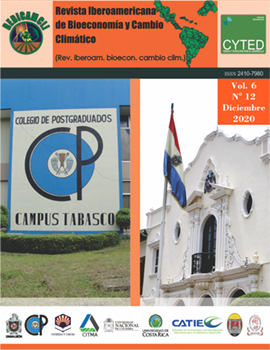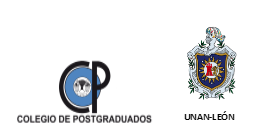Reproductive capacity of Nannochloropsis oculata in different concentrations of salinity and fertilizer: an approach to the aquaculture bioeconomy
DOI:
https://doi.org/10.5377/ribcc.v6i12.9977Keywords:
Battery, Salinity, Temperature, Nannochloropsis, Nutrient, Aquaculture BioeconomyAbstract
The aim of the present study was to evaluate the reproductive rhythm of Nannochloropsis oculata using two experimental batteries and applying single doses of 0.32 ‰ and 1 ‰ of F/2 Guillard, respectively; in salinities of 33 ‰, 25 ‰, 20 ‰, 15 ‰, 10 ‰ and 5 ‰, periods of 10 and 23 days and temperature of 25 ºC. In a first experiment, with 0.32 ‰ of F/2 Guillard, N. oculata presented a higher number of cel/ml in salinities of 33 ‰ and 25 ‰, after 8 days of study, denoting the affinity of N. oculata to reproduce with higher speed in that salinity range. The importance of the use of F/2 Guillard was observed using 1 ‰ because the microalgae has a similar number of cel/ml (P≤0.05) in saline concentrations of 33 ‰, 25 ‰, 20 ‰ and 15 ‰ and similar concentration to microalgae grown with 0.32 ‰ F/2 Guillard in salinities of 33 ‰ and 25 ‰. The ability of N. oculata to reproduce in saline concentrations of 33 ‰, 25 ‰ and 20 ‰ and low levels of nutrients was tested in a second experiment which the results show a similar number of cel/ml between the saline treatments, in both batteries, after 23 days of cultivation. Our results suggest that N. oculata can reproduce with a low concentration of nutrients and that its metabolism may be mediated by the catalysis of some proteins such as rubisco that serves as an important reserve of nitrogen, sulfur and carbon.
Downloads
454
HTML (Español (España)) 0
Published
How to Cite
Issue
Section
License
Copyright © Rev. iberoam. bioecon. climate change (Graduate School and UNAN-León, School of Agricultural and Veterinary Sciences / Department of Agroecology / Center for Research in Bioeconomy and Climate Cahnge (CRByCC).








